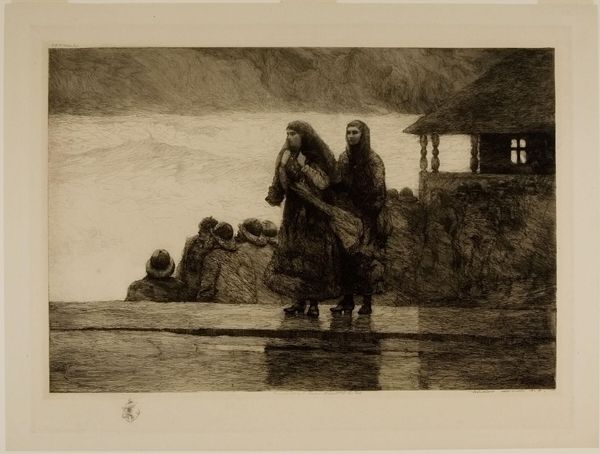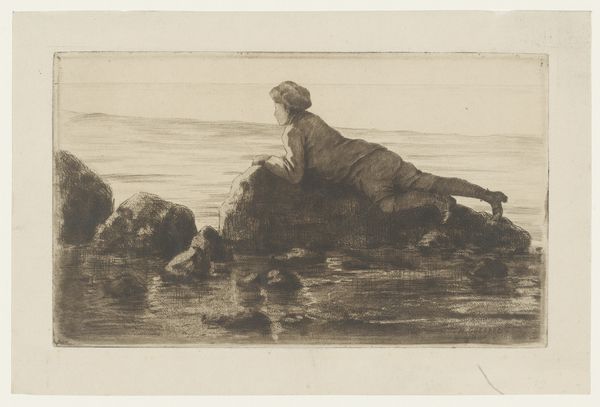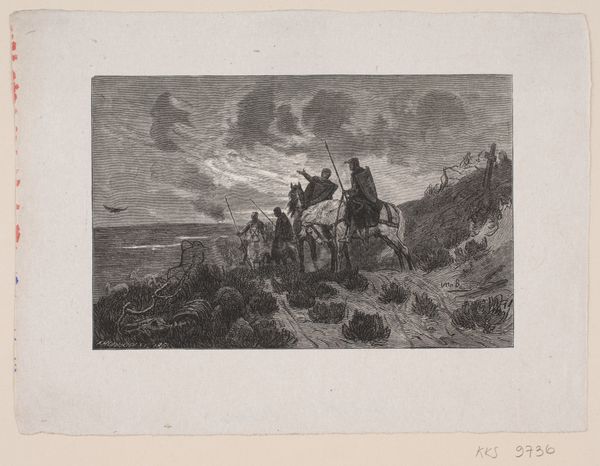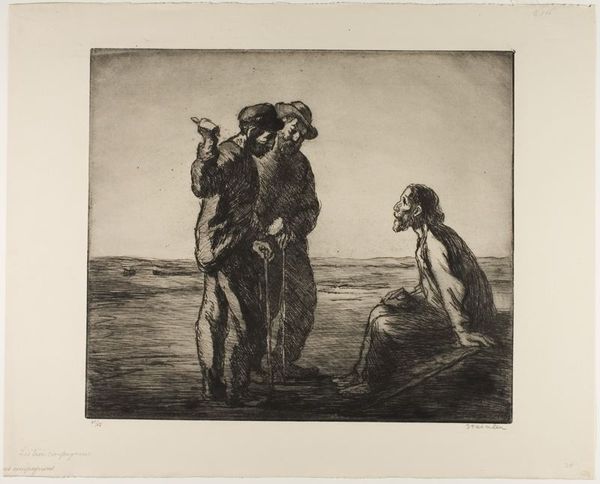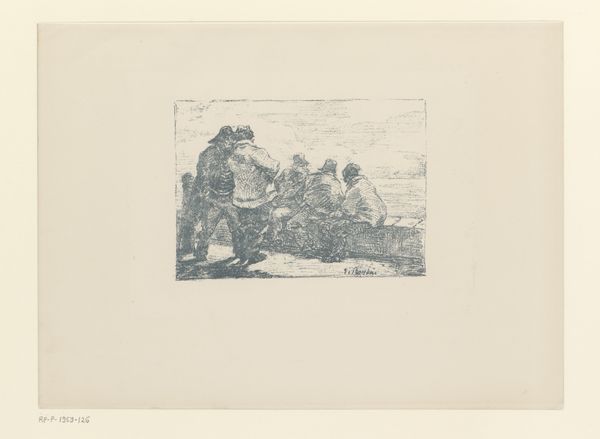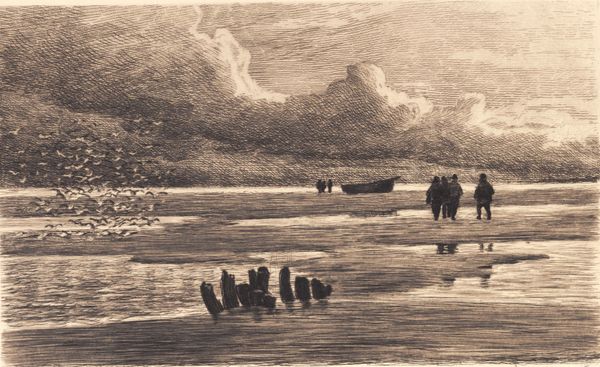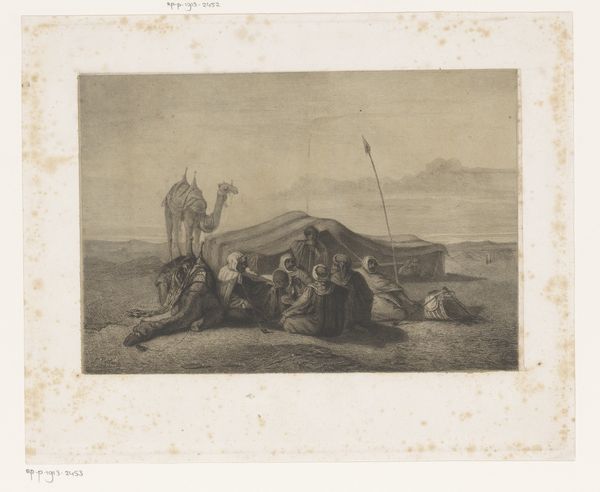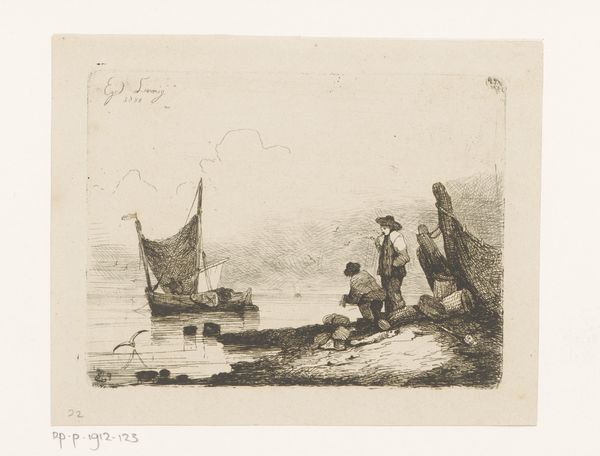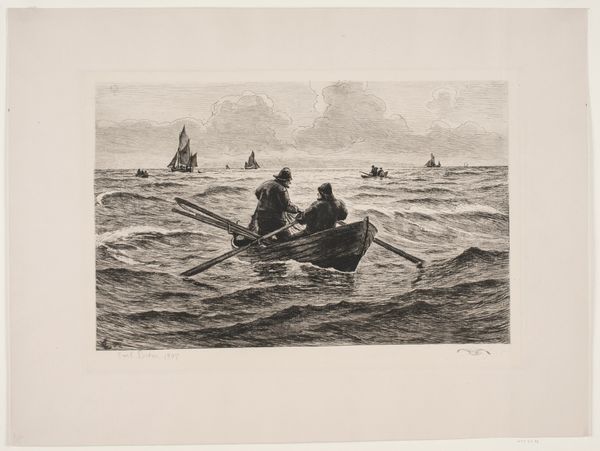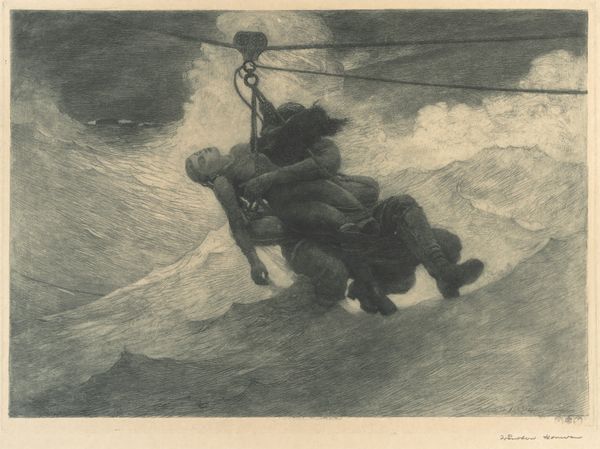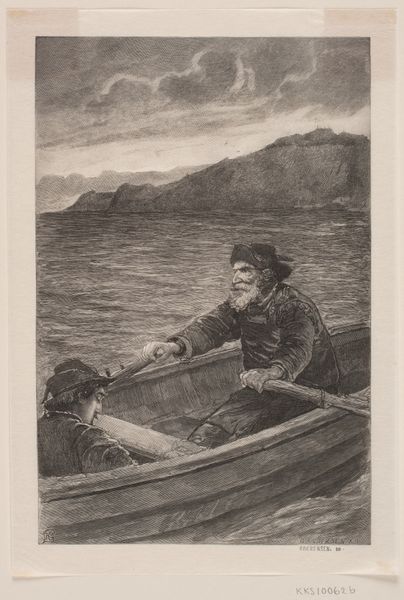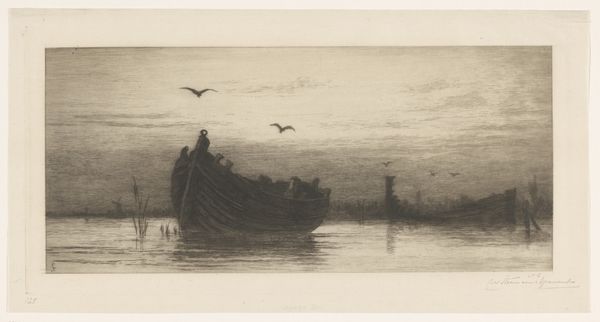
Dimensions: image: 13 11/16 x 20 1/4 in. (34.8 x 51.4 cm) plate: 16 7/16 x 21 3/4 in. (41.7 x 55.3 cm) sheet: 21 9/16 x 27 11/16 in. (54.7 x 70.3 cm)
Copyright: Public Domain
Editor: We’re looking at Winslow Homer’s “Perils of the Sea” from 1888, a gelatin silver print housed here at the Met. The monochrome image has a somewhat somber mood, doesn't it? Two women stand looking out at a turbulent sea as other figures look on from the coast. What kind of stories does this image tell you? Curator: This print encapsulates so much about late 19th-century American culture and Homer's engagement with it. He was acutely aware of the rise of industrialism and urbanization and often countered those forces in his art, returning again and again to images of rural life and humanity's relationship with the natural world. The social context of seaside communities deeply impacted the production and consumption of art. How does Homer’s technique further emphasize the thematic undertones? Editor: I see that the blurred details add to the drama of the seascape. But, the figures closest to us seem grounded and real, like everyday women experiencing hardship. Curator: Exactly. The play between the romantic and the real underscores tensions present in American society during this time period, where rapid industrial change threatened ways of life, especially within more isolated maritime communities. What message do you think the Metropolitan Museum of Art was sending to the public by acquiring and displaying a work like this at the turn of the century? Editor: Perhaps the Met saw the value in depicting modern American life. I mean, this drawing pulls us into the everyday realities that these women lived through. I can only imagine how audiences were fascinated. Curator: That's definitely part of it. But I'd argue museums also legitimized certain aspects of culture at the expense of others. This print could reinforce idealized views of "simple living" in a rapidly changing society. Editor: I hadn't considered that angle! This print feels more complex now – not just a picture but a window into historical forces shaping art. Curator: And art shaping society’s views in return. Food for thought, isn’t it?
Comments
No comments
Be the first to comment and join the conversation on the ultimate creative platform.
